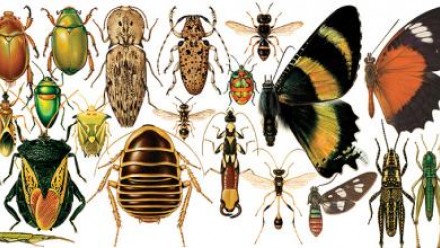A molecular view of Australian biodiversity - exploring insect genomes for major shifts in functional genes
CSIRO Insect Collection Postgraduate scholarship
Use CSIRO’s collection resources in combination with DNA barcodes, Whole Genome Shotgun sequences and 600 recently sequenced transcriptomes to build the tree of life for selected Australian insect groups, exploring genomes for functional genes within this evolutionary context.
With over 1 million named and many more undescribed species, insects provide more than 80% of the biodiversity of life on earth. Insects have adapted to almost every terrestrial habitat on the planet, which is reflected by their vast morphological diversity. Far less well studied, yet even greater and crucial for adaptation, is their diversity at the molecular level.
New DNA sequence data are generated worldwide at an unprecedented scale, and exploring their diversity in the context of an evolutionary framework could help answer many important questions:
- How did the great diversity of insects evolve in Australia?
- Are shifts in insect biology correlated with major changes in genomes, e.g., changes from host specialists to generalists with the expansion of gene families?
- Can we use genomic information to predict the potential of a species to develop into a pest?
- How many new species are probably hidden in our collection and still await discovery?
The Australian National Insect Collection (ANIC) is home to 12 million specimens and is the by far largest repository of Australia's biodiversity. As part of CSIRO's Environomics Future Science Platform, the ANIC has started to generate low coverage whole genome sequence data for selected groups for the purpose of species identification and discovery. This will be feasible in a high-throughput fashion due to robotics and cutting-edge technology like Acoustic Liquid Handling in our lab.
You will be part of a collaborative team at CSIRO and ANU (Research School of Biology) and have access to our lab infrastructure, supercomputers, collection and molecular data, which will include unpublished low coverage whole genome shotgun (WGS) data for several thousand species, unpublished transcriptomes of 600 species and published data (e.g. 1,000 transcriptomes of 1KITE). By combining and analysing these data phylogenetically, you will reconstruct branches of the Australian 'Tree of Life'. Based on this tree, you will have the opportunity to explore transcriptomes and genomes for major changes in functional genes. To follow promising leads, you will also generate your own genome and transcriptome data as needed.
Where will your research take you?
Supervisors:
- Andreas Zwick, Australian National Insect Collection, CSIRO (Andreas.Zwick@csiro.au)
- Craig Moritz, Research School of Biology, ANU (craig.moritz@anu.edu.au)
About the CSIRO National Research Collections (Canberra) top-up scholarships
- 2018 start
- $7,000pa top-up stipend and $10,000pa operating
Projects will be advertised via CSIRO’s careers portal in mid September 2017 (applications close 31 Oct 2017).
Prospective students should get in touch with both the CSIRO and ANU supervisor/s to discuss the project they intend to apply for.
This is a top-up scholarship, therefore students must currently be, or be able to be, enrolled in a PhD program at ANU and will need to be awarded a main source of funding (a full scholarship), ie. in addition to applying for the CSIRO scholarship (via CSIRO’s careers portal), at the same time (or before) they will also need to apply via the ANU online system and be successful in receiving either an:
- Australian Government Research Training Program International Fee Offset Scholarship (applications close 31 Aug);
- Australian Government Research Training Program Stipend Scholarship (applications close 31 Oct); or
- ANU PhD scholarship (applications close 31 Oct).









